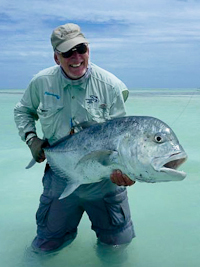There are a number of artists that I really admire, and no doubt plenty of others that I am yet to discover. I will share some of these artists with you over the coming months, and hopefully I will be able to collect some of their work for myself over the next few years.
One of these artists is Craig Bertram Smith from South Africa. His amazing drawings and paintings are exceptional, and I am fortunate to own one of his fine art giclee canvas prints. I would love to add an original painting to my wall one day too.
As someone who used to draw a lot and occasionally even paint, I am always in awe of other artists that can consistently produce beautiful, high quality work. I had a passion for drawing in the ultra realism style, but I could never get my drawings to look quite the way I wanted so was never satisfied with what I finished up with. This makes me even more appreciative of craig's work.
Below is the print I own. After discussing with fine art framer Jodie Prymke, we decided to mount the print on aluminium to keep it flat. This aluminium mounting is also common on fine art photographic prints and was done by Atkins Technicolour using archival materials. Jodie then matted the print and framed it in a fairly simple blue. The frame perfectly compliments the fins that give this fish its name - the Blue Fin Trevally (or Kingfish). This picture which is just a snapshot of it hanging on my wall doesn't do the print or the framing justice. It needs to be seen up close to appreciate its true beauty.
"Electric Blue" - Fine Art Giclee Print on Canvas
Now after taking up photography myself, I automatically get the photographic ultra realism I desired in my drawings. This means I can now concentrate on being more creative with my own work. As you can probably tell, I still love art, and I often find myself sketching when I should be doing something else. Looking at the work of other artists, no matter the medium is inspirational - especially work like Craig produces. It is certainly worth hanging some of his work over your tying bench, or even better in your living room.
Apart from fish and fishing, Craig also does some amazing work depicting wildlife on the land too. To see more of his work, please visit http://www.craigbertramsmith.co.za
There is also a neat article on Craigs work here at Global Flyfisher
All images in this post (apart from the shot of my framed print) Copyright Craig Bertram Smith











